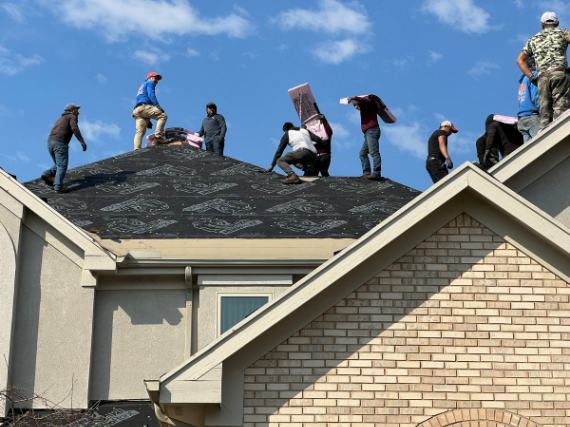Certainly, there are various Roofer Dallas installation options available, each with its own set of advantages and disadvantages. Here are four common types of roofing materials and their pros and cons:
- Asphalt Shingles:
- Pros: Asphalt shingles are widely used due to their affordability and easy installation. They come in a variety of colors and styles, making them suitable for various architectural designs. They provide good fire resistance and are relatively low maintenance.
- Cons: While they are durable, asphalt shingles have a shorter lifespan compared to some other roofing materials. They can be susceptible to damage from severe weather conditions, such as strong winds and hail. Quality can vary between different brands and price points.
- Metal Roofing:
- Pros: Metal roofs are highly durable and can last 50 years or more. They are excellent at shedding snow and rain, making them ideal for areas with heavy precipitation. Metal roofs are energy-efficient as they reflect sunlight and reduce cooling costs. They are also resistant to fire and pests.
- Cons: The upfront cost of metal roofing is typically higher than that of asphalt shingles. Improper installation can lead to noise during rain and may require additional insulation for sound reduction. Some people might not prefer the appearance of metal roofing.
- Wood Shingles or Shakes:
- Pros: Wood shingles and shakes provide a natural and rustic look to a home. They are environmentally friendly and can last around 30 to 40 years when properly maintained. Wood offers good insulation properties and can withstand moderate weather conditions.
- Cons: Wood roofing requires regular maintenance to prevent moss, rot, and insect infestations. They can be susceptible to fire, and some areas have building codes that restrict their use due to fire concerns. Installation can be more complex than other materials.
- Slate Roofing:
- Pros: Slate roofs are incredibly durable and can last over 100 years. They have a unique, upscale appearance and are resistant to fire, pests, and rot. Slate is a natural material with low environmental impact.
- Cons: The weight of slate roofing requires a sturdy roof structure, which may increase installation costs. The installation process is labor-intensive and requires skilled professionals. The upfront cost of slate roofing is high, making it a premium option.
When choosing a roofing material, it’s important to consider factors such as your budget, the climate in your area, the architectural style of your home, and your long-term maintenance preferences. Consulting with roofing professionals and conducting thorough research will help you make an informed decision based on your specific needs and priorities.
